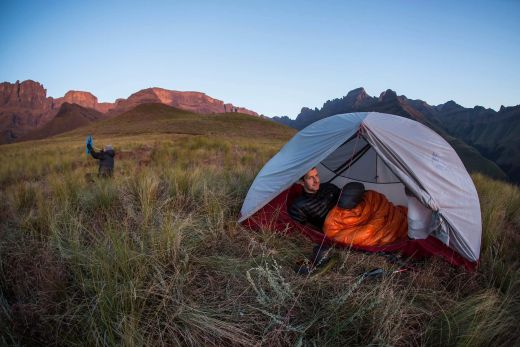If you’re like me – a light sleeper who often has trouble falling asleep while out on the trail – I feel for you. I really do. There’s little worse than lying awake and staring at the roof of your tent while your adventure buddies saw logs. If things look really hopeless, you will lie there dreading going the whole night without sleep and waking up feeling like crap. Of course, like some horrible self-fulling prophecy, the night will then tick by in seconds warped by your sleep-deprived dementia while you pray for sunrise so that you can give up on trying to get any shut eye. As you can probably tell, I have struggled with sleep for some time. So you can also trust me when I say that there’s hope and that it’s possible even for insomniacs to get a good night’s sleep while camping. It all comes down to being prepared, knowing how to make yourself warm and comfortable, and understanding your sleep-wake cycle.
Stay warm
It’s difficult to fall asleep while shivering from cold, and the first thing you need to do to ensure a good night’s sleep is ensure that you’re warm. This mostly comes down to having the right gear and knowing how to use it.
Get your sleep system dialled in
Your sleep system consists of three components: your sleeping bag, your sleeping pad, and the clothes you sleep in. Each plays a different but equally important role in trapping heat around you, which is why you need to consider the system as a whole when thinking about your insulation needs. Sleeping bag ISO rating and pad R-values can offer some guidance when choosing gear, but ultimately you’ll have to calibrate your system using a little trial and error (You’ll want to do this on a short car-camping trip and not your first thru-hike). My article on sleeping bags and quilts explains exactly how to do this.
Secure the draft collar
When it gets cold, you’ll want to secure the draft collar around your neck, cinching it in snug if you need to minimise heat loss. This helps to prevent the ‘bellows effect’, which is what happens when your nighttime tossing and turning forces the warm air inside your sleeping bag out through the top. Most mummy-shaped sleeping bags have an insulated tube inside the collar – usually secured in place with a flat clip. More minimalistic bags and quilts have only a drawstring for drawing the collar around the sleeper’s neck.
Wear a warm hat
Much body heat is lost through your head – something you will need to prevent on colder nights, especially if you are using a quilt or a sleeping bag that doesn’t have a hood. A warm hat might add 100 grams (3.5 oz) to your kit, but then it can keep your head warm while you perform camp tasks as well as while you sleep. The best hat will be a fleece or merino wool beanie (good allround thermal properties and odour resistance) that covers your ears. A hat should fit snugly but not be too tight. Otherwise it won’t be comfortable enough to sleep in.
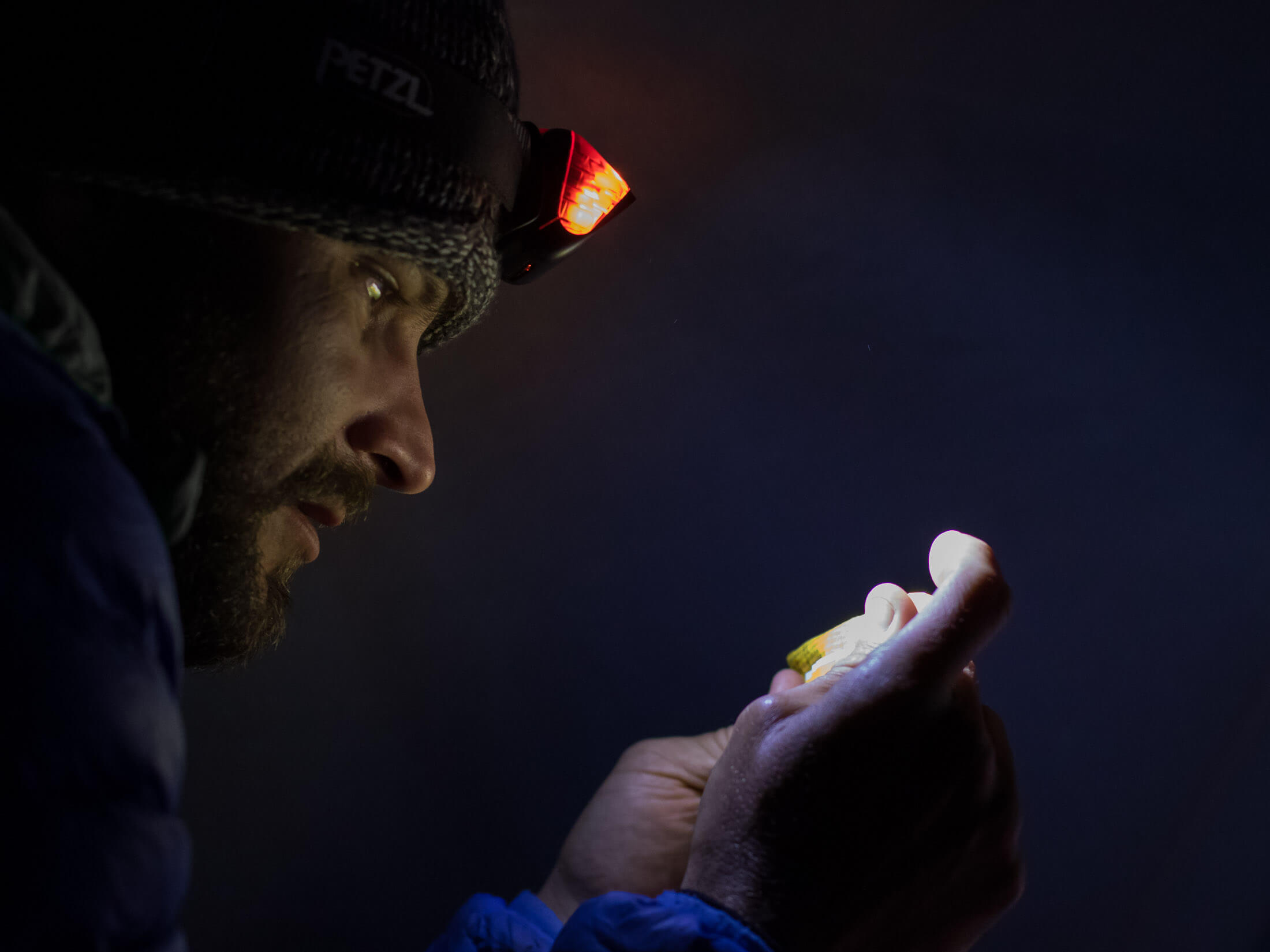
Warm your hands and feet
It’s easier to preserve body heat than it is to generate more of it if you are already cold. The lesson here is that you want to get into your sleeping bag while warm or supplement your body heat with an additional heat source. Chemical hand warmers are an obvious solution, but you can also use a cup of tea to warm your hands and fill a 1L water bottle with warm water to warm your feet. You’ll want to use a durable bottle like a Nalgene and ensure that the lid is screwed on tight.
Dry out your gear
Down sleeping bags lose their insinuating properties very quickly when wet, and the best way to ensure that your gear performs as intended is to keep it dry, or if that’s not possible, to air it out regularly to prevent moisture build up. This is particularly important if you spend time in more humid environments like the forests of the Pacific NorthWest. If there will be few opportunities to air out your sleeping bag, as might be the case if it rains a lot, synthetic insulation is a better option than down.
Get comfortable
After warmth, comfort is the next most important prerequisite for a good night’s sleep. As with insulation, some people might need to do more to make themselves comfortable. Side sleepers in particular will probably need to spend more time figuring out what works best for them.
Sleep in comfortable camp clothes
My usual strategy is to have one set of clothes (moisture wicking and quick-drying) for wearing during the day while hiking, riding or climbing, and another warmer and more comfortable set of clothes for sleeping in and wearing around camp on colder evenings. Besides ensuring that you always have dry, warm clothes to wear in the evening, this strategy also ensures that you have a relatively clean set of clothes to sleep in. Even if you can’t physically feel the difference between a dirty top and clean top, there’s a certain psychological comfort to be had in sleeping in clean clothes.
Invest in a camping pillow
You can use a dry bag (or sleeping pad pump sack) filled with clothes as a pillow, but this strategy only works if you have enough clothes to fill your dry bag. On ultralight missions, you will likely wear most of what you have with you, leaving very little for you to fill your ‘pillow’ with. Fortunately, inflatable camping pillows have gotten very light (2 oz in the case of Therm-a-Rest’s Air Head Lite Pillow) and there is very little reason to not pack one.
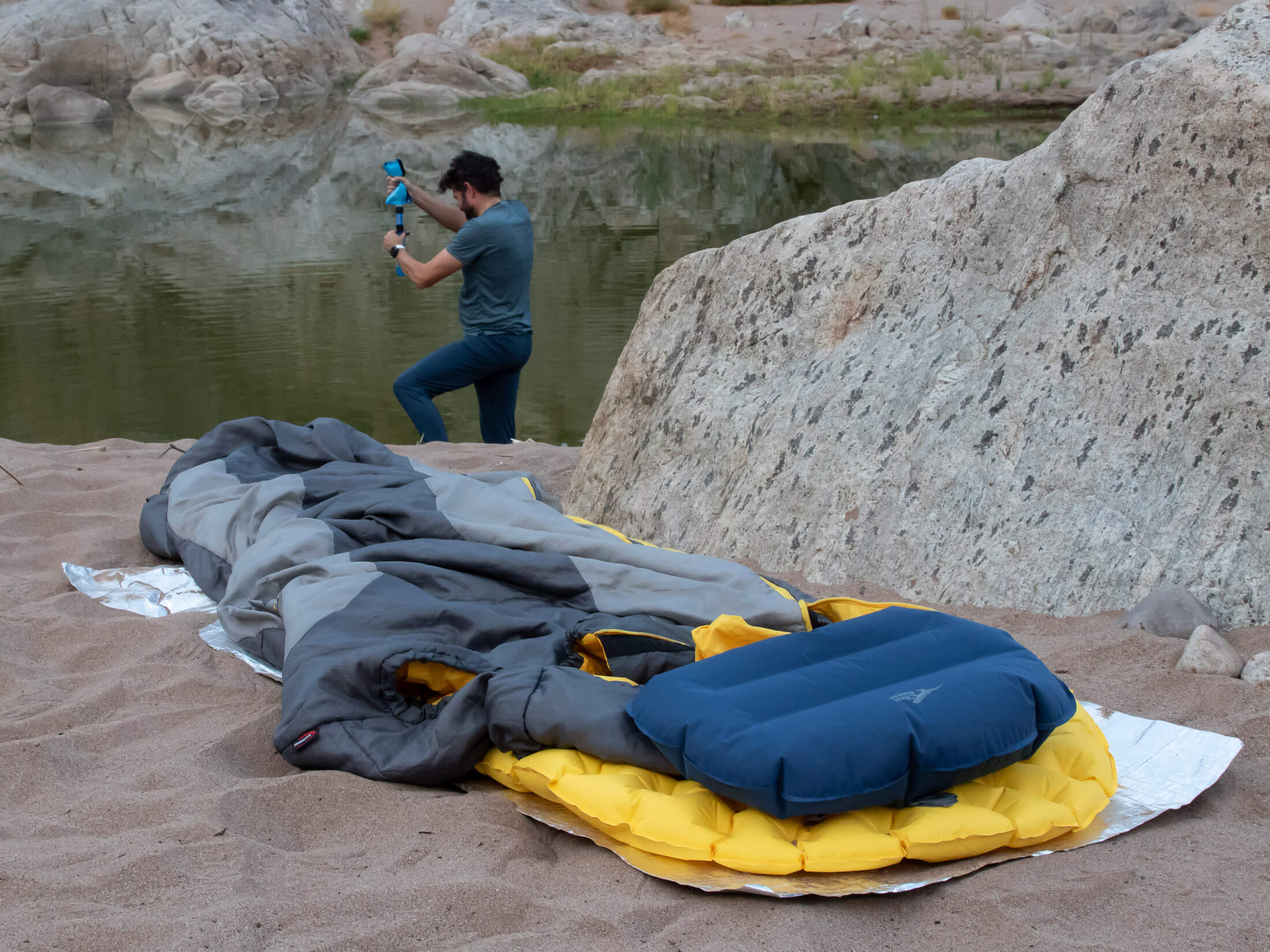
Don’t over-inflate your sleeping pad
If you are new to backpacking, your first instinct might be to make your air or self-inflating pad as firm as possible. Unless you have a very thin pad, it’s best not to. A very firm pad isn’t comfortable. Side sleepers, especially, will sleep much better if they only partially inflate their sleeping pads. This way, a sleeper’s hips can sink into the pad, ensuring more support elsewhere and a generally more ergonomic sleep position. Note: thicker pads allow the use of lower air pressures while still ensuring that you don’t feel the ground through the pad.
Create a notch for your hip
If you are a side sleeper and only have a thin pad, you might find that you don’t have enough support for your knees and the areas above and below your hips. One solution is to create a small notch in the ground for your hips. Often, this will ensure a better and more comfortable sleep position. If you do plan to dig out a notch for your hips, follow the Leave No Trace (LNT) principles. Don’t dig if it means ripping up plants or grass. Rather, search for campsites with pine needles or loose soil that can easily be used to refill the depression when you pack up camp the next day.
Attach your sleeping bag to your pad
Sliding off your sleeping pad in the middle of the night is guaranteed to irritate any camper. If you’re struggling to stay on your pad while sleeping, consider getting a sleeping bag with a pad sleeve or clips that can be used to attach the bag to the pad. Because quilts have to stay bottom-side-down, they actually come standard with a pad-attachment system – straps designed to keep the quilt cinched down on top of a pad. If you decide to go with a sleeping bag that has a pad sleeve, just make sure that your pad is compatible (the right width).
Choose a good campsite
Knowing how to choose a suitable campsite can mean the difference between a restful night’s sleep and a cold, wet ordeal. Here’s what you want to look for and avoid when picking a spot to bed down.
Camp far from prying eyes
When wild camping, it’s important to choose a campsite where you will be safe, not only because you want to avoid becoming a victim of crime but also because you need peace of mind before you have any chance of getting some sleep. If you’re not on a popular trail or travelling with others, it’s best to choose a spot far from prying eyes and a good distance from any settlements or roads. Also, avoid making camp while being watched by anyone vaguely suspicious.
Avoid cold sleep surfaces
What you sleep on can make a big difference to how warm or cold you sleep. Snow is filled with air which actually makes it a better insulator than rock. No joke – if overnight temps are below freezing and you have a choice between sleeping on snow or rock, snow is probably a better choice. If you’re forced to sleep on rock, you can expect to lose even more body heat to the ground underneath you. Pine needles and leaf litter, on the other hand, offer good insulation and should be your first choice if you can find them in a suitable sleeping spot.
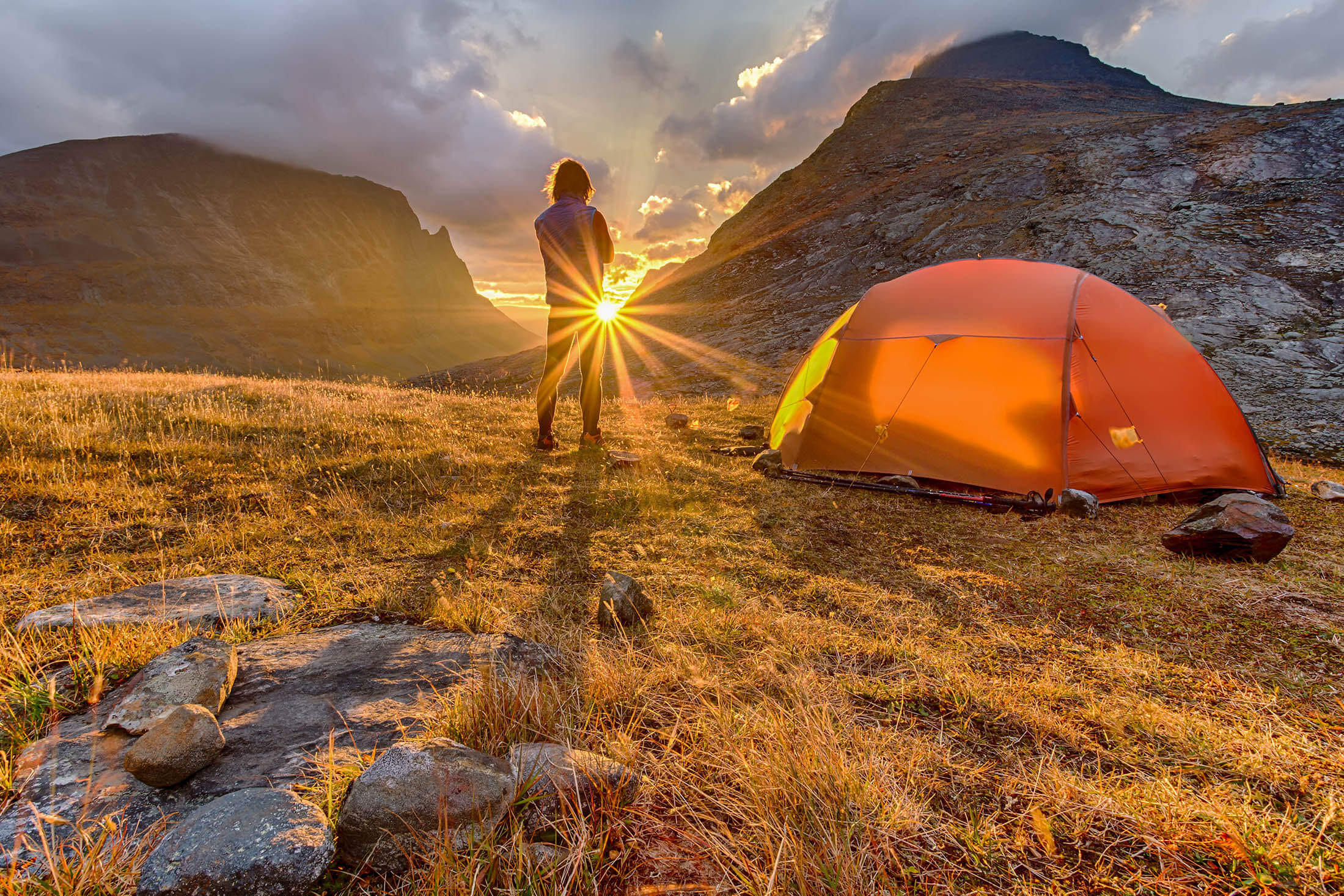
Pick a level campsite
If the ground is a bit lumpy, you still might be able to sleep comfortably with a thick enough pad, but there’s no fixing the problems associated with sloping ground. Even if your sleeping bag is securely attached to your pad (preventing it from slipping off the pad), you will probably still roll around or slide about in your sleeping bag or quilt. Before resigning yourself to an unlevel campsite, always go a little further in search of a better spot, and if there really is no level ground to be had, at least try to create a flat-ish sleeping platform using your backpack and other spare pieces of gear
Sleep with your head uphill
If level ground is not an option, sleep with your head uphill. That way you won’t roll or slide off your sleeping pad as you might if you slept across a slope and blood won’t rush to your head and cause a nasty headache as it might if you slept with your head downhill. Sleeping with one’s head uphill also feels more natural for most people.
Kill the light
Your sleep-wake cycle is governed by your exposure to bright light, and the best way to ensure quality sleep is to limit your exposure to white light after sundown.
Put the phone away
The blue light emitted by cell phone and tablet screens can disrupt your sleep pattern just as easily as the midday sun. If you really want to read an ebook before bed, try to avoid doing so on an LCD or LED screen. The Kindle Paperwhite is a better alternative for nighttime reading as it emits no blue light, but you could do one better by opting to listen to an audio book or podcast instead. The ounce counters out there will nod, knowing that a phone (all that is needed for listening to a podcast) is a lot lighter than a Kindle ereader.
Sleep with the sun, wake with the sun
Unless you’re trying to set a FKT and need to start each day before sunrise, there’s no need to fight your circadian rhythms. Rise with the sun and go to bed with the sun, and you’ll likely sleep a lot better. Of course, it takes some time for your sleep-wake cycle to adjust to a new pattern of light exposure, and your internal clock might need a few days to sync properly if you’ve been waking well before sunrise or going to bed long after dark. I usually start sleeping more soundly three to five days into a trip.
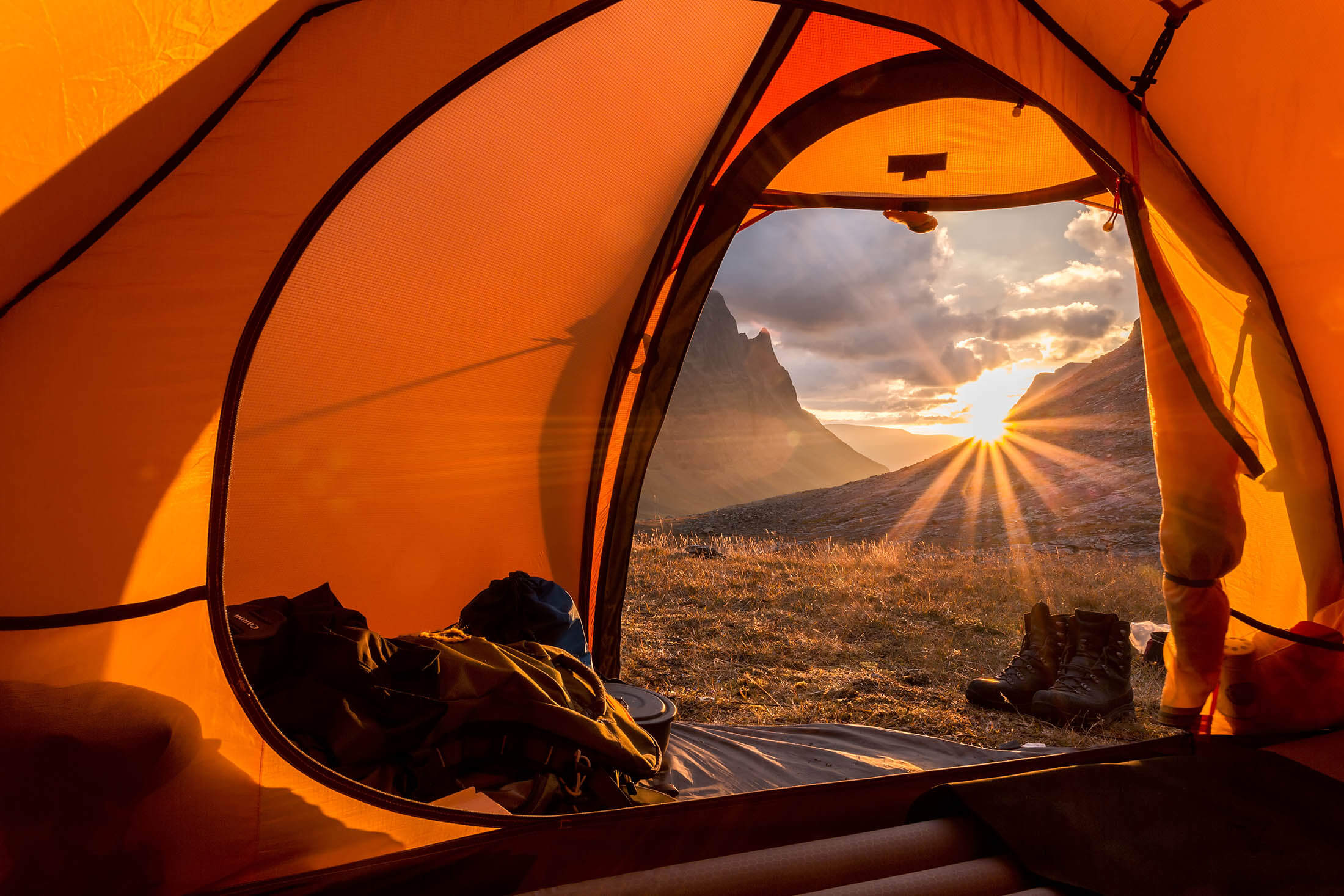
Sleep mask
A sleep mask is most useful in two circumstances: when summer camping north of the 50th parallel, a latitude at which you can experience over 16 hours of daylight, and when sleeping under a full moon, which can shine as brightly as a street lamp when there’s no light pollution. But there are also some people who just sleep better with a sleep mask regardless of the amount of ambient light – and those who appreciate being able to get some shuteye while their tentmate continues to read long after bedtime.
CBD oil
CBD oil may improve both the quality and quantity of sleep by ensuring that the body progresses through the different stages of sleep without interruption. Such an effect is beneficial to anyone who struggles with sleep but is especially helpful to campers whose circadian rhythms need to adjust from a regular ‘working week’ sleep pattern to their on-trail sleeping habits. Just make sure you go to bed more than 8 hours before you plan to wake up. Otherwise you could wake up feeling very groggy.
Other tips and tricks
Beyond knowing how to stay warm, make yourself comfortable, and improve your sleep patterns, there are few other, possibly less obvious, things you can do to ensure a good night’s sleep out on the trail.
Go to the toilet before you go to bed
When you’re tucked into a warm sleeping bag, the last thing you want to do is get up and go relieve yourself in the chilly evening air (if you find yourself in this position, you should just do it, but more about that in a moment). To avoid this situation, go to the toilet right before you go to bed. Besides helping you avoid any discomfort, this strategy will improve your chances of sleeping through the night without interruption. If your bladder is still likely to wake you in the middle of the night, try to avoid drinking anything in the hour before you go to bed.
Answer nature’s call
If you do still wake up with the urge to go, just go. Regardless of how cold it is outside, being able to relieve yourself and then go back to sleep will be well worth it. If you put off answering nature’s call, you will most likely lie there awake in discomfort and unable to sleep. To make it easier to just get up, it’s best to prepare for a midnight bathroom trip before you go to bed: Put your shoes and a warm jacket where you will find them, and have your headlamp within easy reach.
Keep mosquitos out of your tent
If mosquitos are likely to keep you up at night, be vigilant in keeping your tent door (at least the inner mesh door) closed at night. If you suspect that some have gotten in, it’s best to do a quick search of your tent and kill those you can before turning in for the night. If you aren’t sleeping in a tent or under a net, the next best solution is to spray yourself with some kind of DEET product or insect-repelling essential oil before you go to sleep. Just don’t spray your tent with DEET. It will damage the coating .
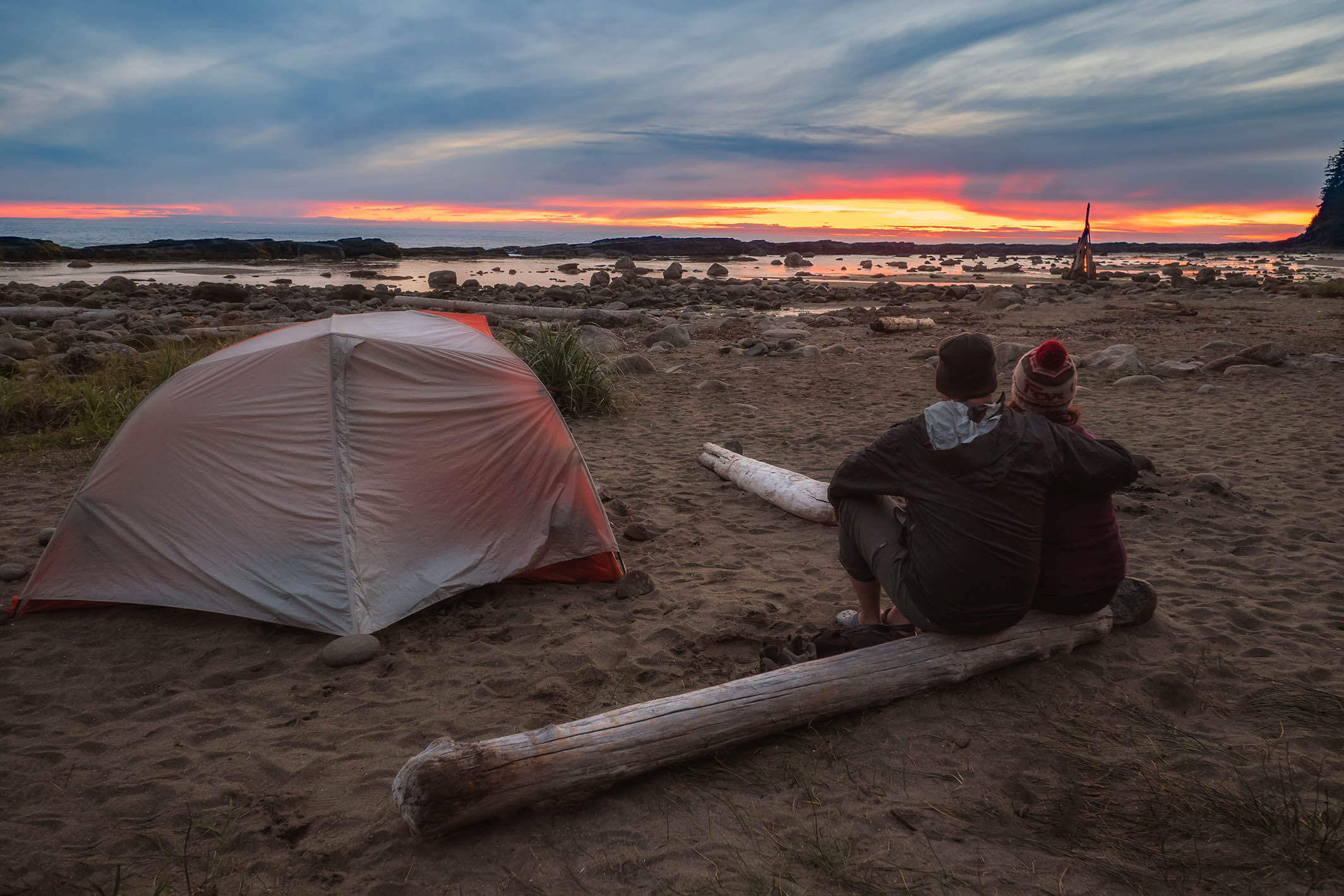
Hang your food where animals won’t get it
When in bear country, you should store food either in a bear canister (more secure) or in a purpose-made bag hung from a tree (less secure). Whatever you do, just don’t store your food in the tent. Your Reese’s Peanut Butter Cups aren’t worth an encounter with a 1000-pound scavenger. If bears aren’t a threat, you should still hang your food to stop other animals from getting into your stash. Also make sure that cookware, bowls and cups are cleaned and put away before going to bed. Even a mouse can make a lot of noise if it has a metal cup to use as a percussive instrument.
Earplugs
Snoring tent mates and other nighttime sounds can keep you awake if you have no way of blocking them out. Earplugs weigh next to nothing and are very valuable in this regard – being able to shield you from the cacophony that can make it impossible for an overstimulated brain to fall asleep. Even if I don’t need earplugs when I go to bed, I put them within reach so that I don’t have to go looking for them if I wake up to the sound of my adventure buddy blowing Z’s. If your sleeping bag comes with a small internal stash pocket, this is a good place to keep them.
Tighten up that pitch
A tent or tarp that flaps in the wind will keep you awake. Worse yet, it could result in guylines breaking free and cause the tent to deform. To ensure that you don’t have to get up in the middle of the night to attend to a rogue fly sheet, work on getting your pitch as taut as possible, even if it’s just to give you peace of mind. If you use a tensioned shelter or tarp, I recommend reading my article on tarp rigging techniques for tips on how to ensure a storm-proof pitch.
Learn from every trip and make adjustments
The best way to improve your sleeping habits on the trail is to get out there, test out what you have learned here, and make adjustments. It’s only through trial and error that you will really figure out what works best for you. That said, it will also help to understand your gear better. In this article, I only just touched on sleep systems. To learn more about how your gear can be combined to keep you warm and comfortable, I recommend reading my gear guides to sleeping bags and sleeping pads next. Both go into the science of insulation more deeply and can help you to choose the right gear and to get the most out of it.
